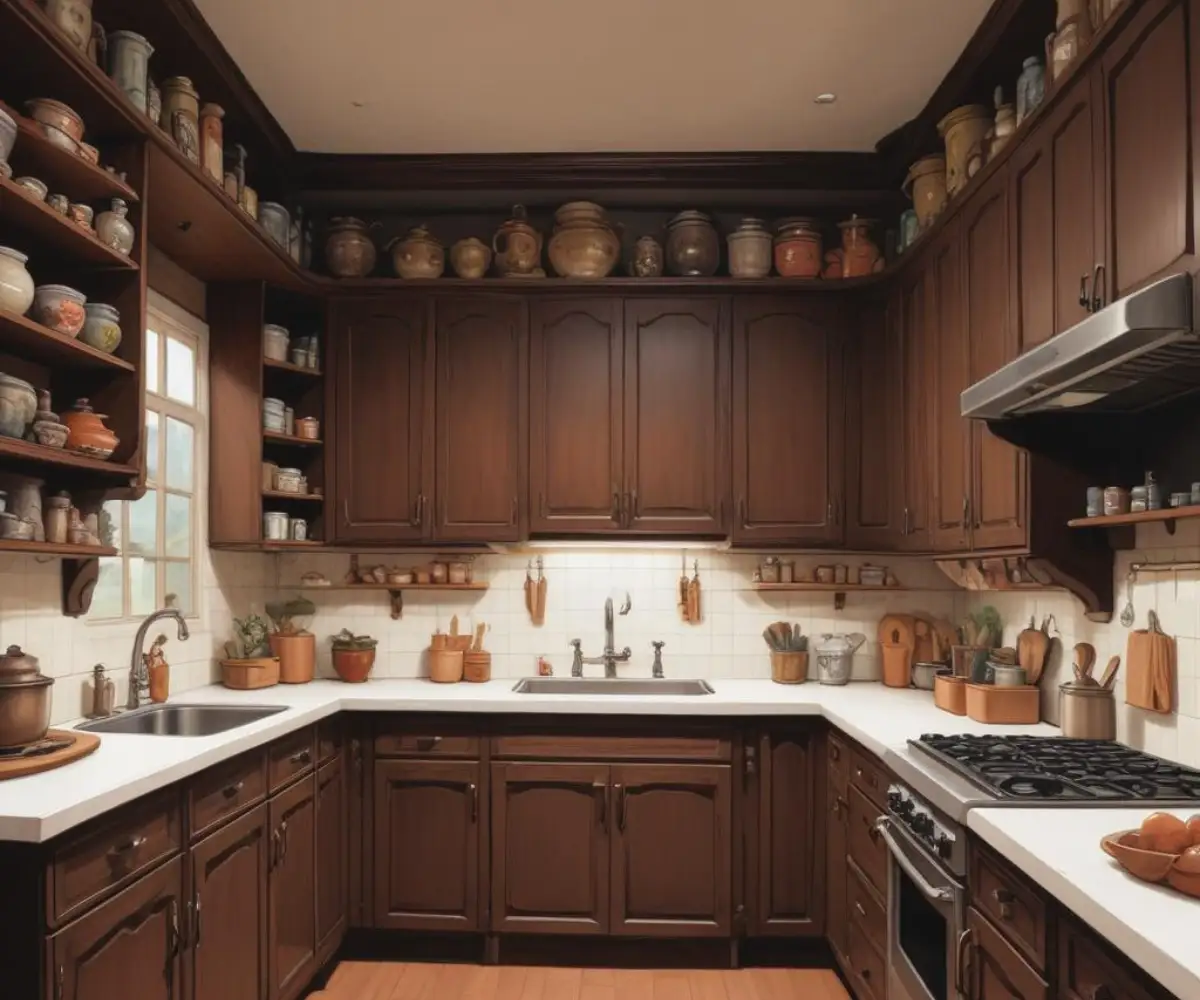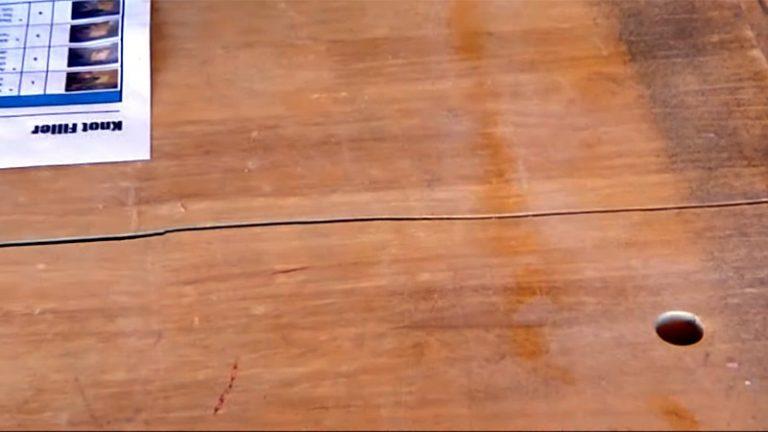Cabinets Separating From Ceiling? Don’t Panic—Here’s the Fix!
It’s a sight that sends a shiver down any homeowner’s spine: a noticeable gap forming between the top of your kitchen cabinets and the ceiling. Your mind immediately jumps to the worst-case scenario—are they about to come crashing down? While it’s a serious issue that demands immediate attention, the cause isn’t always a catastrophe in the making. Understanding why it happens is the first step toward a safe and secure fix.
This problem can range from a minor cosmetic issue to a sign of a significant installation failure. The good news is that with a clear assessment and the right approach, you can secure your cabinets and restore your peace of mind. This guide will walk you through the common causes, how to determine the severity, and what steps to take next.

You'll Learn About
Why Are My Cabinets Pulling Away From the Ceiling? Uncovering the Causes
That growing gap is a symptom of an underlying problem. Most often, the issue traces back to the initial installation, but other factors like weight, moisture, and even the house itself can play a significant role. Identifying the root cause is critical to applying the right solution.
Installation Issues: The Number One Culprit
The vast majority of separating cabinets are due to improper installation. Wall cabinets must be securely anchored to the solid wood studs inside your walls. If an installer misses the studs, the screws are only holding onto drywall, which is not strong enough to support the weight.
Common installation mistakes include using screws that are too short or of poor quality, not using enough fasteners to distribute the load, or failing to properly shim the cabinets against an uneven wall. Over time, the weight of the cabinets and their contents will cause these weak anchor points to fail.
The Weight of the Contents: An Unseen Strain
Your cabinets are designed to hold a significant amount of weight, but they are not invincible. Consistently overloading them, especially with heavy items like stacks of ceramic plates, glassware, or bulk pantry goods, puts immense stress on the mounting hardware.
This constant strain can slowly pull the screws from the studs, even if they were installed correctly. It’s important to be mindful of what you’re storing in your upper cabinets and distribute heavy items evenly.
Structural Shifts and House Settling
All homes settle over time. Minor shifts and settling are normal and can sometimes create small, cosmetic gaps between cabinets and the ceiling. In some climates, a phenomenon called “truss lift” can occur in the winter, where the roof trusses bow upwards, slightly lifting the ceiling away from the wall framing and cabinets.
However, a large or rapidly growing gap could signal a more serious structural issue with your home’s foundation or framing. If you see corresponding cracks in your walls or ceilings, it’s wise to consult a structural engineer.
Moisture and Humidity Damage
The kitchen is a high-humidity environment. Steam from cooking and boiling water can, over many years, affect the integrity of wood and particleboard cabinets. Moisture can cause the material to swell, contract, and weaken, compromising the areas around the fasteners.
A hidden leak from the roof or an upstairs bathroom can also introduce moisture into the wall cavity, damaging both the drywall and the cabinet structure itself, leading to a loss of support.
First Steps: How to Assess the Severity of the Gap
Before you decide on a course of action, you need to understand exactly what you’re dealing with. A calm, methodical inspection will tell you if you have a simple cosmetic fix on your hands or a serious safety hazard that requires immediate action.
Step 1: Empty the Cabinets Immediately
This is the most critical first step. As soon as you notice a significant gap or feel that the cabinets are loose, remove all items. This relieves the immediate stress on the fasteners and prevents a potential collapse, protecting your belongings and, more importantly, ensuring your safety.
Step 2: A Close-Up Inspection
Look closely at the gap. Is it uniform across the entire length of the cabinets, or is it wider on one side, indicating a specific point of failure? Check for cracks in the paint or caulk line where the cabinet meets the wall, as this can show the direction of movement.
Also, inspect the interior of the cabinet along the back and top. Look for any screws that appear to be pulling through the cabinet material or any signs that the cabinet box itself is coming apart.
Step 3: Check for Level
Place a level on the bottom of the upper cabinet. If the cabinet is sagging forward, the bubble on the level will be off-center. This is a clear sign that the cabinet has lost its secure connection to the wall and is tilting downwards under its own weight.
Step 4: Locate the Wall Studs
Use an electronic stud finder to locate the studs in the wall behind the cabinets. Mark their locations with a pencil. Open the cabinet doors and check if the original installation screws line up with your stud marks. If the screws are between the studs, you’ve found the primary cause of the problem.
Fixing the Gap: Your Step-by-Step Repair Guide
Once you’ve assessed the situation, you can decide on the best repair strategy. Minor issues can often be handled with simple cosmetic fixes, while more significant separation requires re-securing the cabinets to the wall.
For Minor Cosmetic Gaps (Under 1/4 Inch)
If the cabinets are perfectly secure and level, and the gap is small and uniform, it’s likely due to normal house settling. The easiest solution is to conceal the gap. You can apply a bead of flexible, paintable caulk along the gap for a seamless look.
An even more elegant solution is to install crown molding or another decorative trim along the top of the cabinets. This not only hides the gap but also gives your kitchen a more finished, high-end appearance.
DIY Guide to Re-Securing Cabinets
If your inspection revealed that the cabinets are loose or sagging, they must be re-secured. This is a job for a confident DIYer, as it requires some basic carpentry skills and an assistant. If you are not comfortable with this process, call a professional handyman or carpenter.
Your primary goal is to drive long, strong screws through the cabinet’s sturdy hanging rail, through the drywall, and deep into the wall studs. This will create a new, powerful connection to hold the weight.
| Tool or Material | Purpose | Key Specification |
|---|---|---|
| Stud Finder | To locate the wooden studs inside the wall. | Electronic deep-scan model recommended. |
| Drill/Driver | To drill pilot holes and drive in new screws. | Cordless model for convenience. |
| Cabinet Screws | To securely fasten the cabinet to the wall studs. | #10 x 3-inch cabinet screws with built-in washer heads. |
| Level | To ensure the cabinet is straight before final tightening. | 2-foot or 4-foot level. |
| Wood Shims | To fill the gap between the cabinet and wall, ensuring a tight fit. | Tapered wood or composite shims. |
| Car Jack or Bracing | To safely support the cabinet’s weight during the repair. | A 2×4 cut to length can also be used. |
| Helper | To assist with lifting, holding, and ensuring safety. | Essential for this job. |
Step 1: Support the Cabinet. Position a car jack with a piece of scrap wood on top or have a strong helper push the cabinet up firmly against the ceiling. The goal is to close the gap and take all the weight off the failing screws.
Step 2: Drill Pilot Holes. Inside the cabinet, along the top hanging rail, drill new pilot holes that align with the stud locations you marked earlier. Ensure the drill bit is smaller than the diameter of your new screws.
Step 3: Drive New Screws. Drive a 3-inch cabinet screw into each pilot hole until it is snug but not fully tightened. You should feel the screw bite firmly into the wood stud. Add at least two screws per stud for maximum holding power.
Step 4: Shim and Level. With the new screws in place but still slightly loose, use your level to check that the cabinet is perfectly straight. If there’s a gap between the cabinet back and the wall, insert shims until it is snug. This prevents the cabinet from being distorted when you tighten the screws.
Step 5: Final Tightening. Once the cabinet is level and shimmed, tighten all the screws securely. Do not overtighten, as this can crack the cabinet rail. The cabinet should now feel completely solid and immovable.
When to Call a Professional Immediately
You should forgo the DIY approach and call a professional carpenter or cabinet installer immediately if you encounter any of the following:
- The gap is wider than half an inch.
- The cabinet feels extremely unstable or wobbly.
- You see large cracks developing in the adjacent drywall or ceiling.
- You suspect the cause is a serious moisture or structural issue.
- You are not confident in your ability to perform the repair safely.
The Cost of a Professional Repair
Hiring a handyman or carpenter to re-secure your cabinets is often a worthwhile investment in safety and quality. The cost can vary based on your location and the complexity of the job, but you can generally expect to pay for a few hours of labor.
The total cost will depend on how many cabinets need to be secured and if any underlying issues need to be addressed. The financial considerations are often similar to other home projects; for instance, understanding how much to move washer and dryer hookups involves factoring in labor and materials, just as a cabinet repair does.
Prevention: How to Stop Cabinets From Separating in the Future
Once your cabinets are secure, you can take steps to prevent the problem from happening again. Proper care and maintenance are key to the longevity of your kitchen installation.
Insist on Professional Installation
If you’re planning a new kitchen, the single most important factor is a high-quality installation. A professional installer will know how to locate studs, use the correct fasteners, and properly shim and level the cabinets to handle the load for decades to come.
Don’t Overload Your Cabinets
Be mindful of the weight you are placing in your upper cabinets. Store very heavy items like small appliances or cast-iron cookware in your base cabinets whenever possible. Distribute the weight of plates and glasses across multiple cabinets rather than concentrating them all in one.
Control Your Home’s Humidity
Use your kitchen’s exhaust fan every time you cook to vent steam and moisture outside. Address any plumbing or roof leaks immediately to prevent water from damaging your walls and cabinets. Maintaining a stable environment will protect the integrity of the cabinet materials. Thinking about home systems and their impact is important; for example, if you’re concerned about sound traveling through your home, you might research how to muffle tv noise from other rooms, which involves considering wall and ceiling construction.
Perform Regular Inspections
Once a year, take a moment to look along the top of your cabinets. Check for any signs of new or widening gaps. Open the doors and gently try to wiggle the cabinet to ensure it feels solid. Catching any potential movement early makes the fix much easier.

